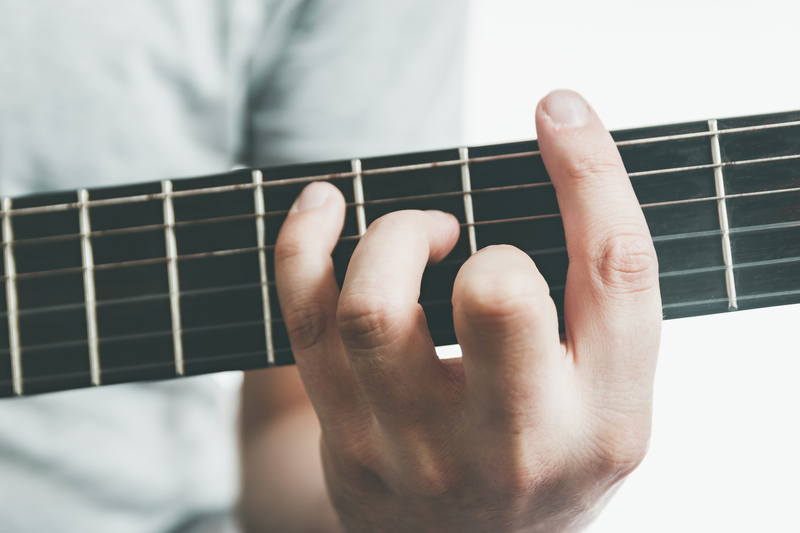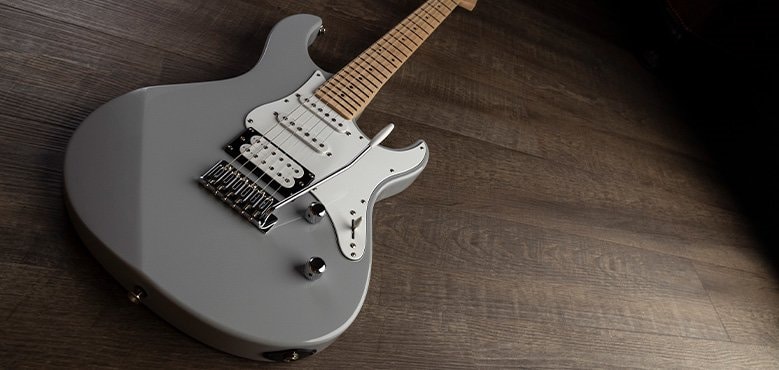How to Play Barre Chords A Comprehensive Guide

Are you looking to enhance your guitar skills and expand your repertoire of chords? Barre chords are a fundamental technique that can take your playing to the next level. In this comprehensive guide, we will explore what barre chords are, why they are useful, how to play them effectively, common chord shapes, troubleshooting tips, and practice strategies to help you master this essential skill.
Whether you are a beginner or an experienced guitarist, this article will provide you with the tools you need to take your playing to new heights.
Key Takeaways:
- Barre chords increase chord vocabulary, allow for different voicings, and make playing in different keys easier.
- Proper hand position, applying pressure, using thumb, and adjusting finger placement are essential for playing barre chords.
- Practice with simple chord progressions, use a capo, and practice with a metronome to master barre chords.
What Are Barre Chords?
Barre chords are advanced guitar playing techniques where a single finger is used to press down multiple strings across the guitar neck, allowing for the creation of various chord shapes.
Mastering the technique of barre chords requires strength and flexibility in the fretting hand fingers. It involves using one finger to press across all six strings, essentially acting as a movable nut on the guitar. This technique not only expands the range of chords a guitarist can play but also adds richness and depth to the sound due to the added notes. By employing barre chords, musicians can easily transpose songs to different keys, making them a versatile tool in a guitarist’s arsenal.
.jpg)
Why Are Barre Chords Useful?
Barre chords are invaluable to guitar players as they expand the chord vocabulary, enhance finger strength and dexterity, and enable the rendition of a wide range of songs.
Mastering barre chords not only allows guitarists to play more complex chords and progressions but also plays a crucial role in developing overall finger agility and coordination. It opens up a whole new world of possibilities, enabling players to tackle various musical styles and genres with ease. Whether it’s rock, blues, jazz, or pop, incorporating barre chords into your repertoire is essential for any serious guitarist looking to elevate their playing skills.
Increase Chord Vocabulary
Mastering barre chords allows guitarists to broaden their chord vocabulary, incorporating complex shapes and progressions into their playing repertoire.
By learning to play barre chords, one can unlock a whole new level of guitar expertise. These versatile chords enable individuals to transition smoothly between different positions on the fretboard and create a richer sound. Understanding the mechanics behind each barre chord shape is like piecing together a musical puzzle, give the power toing players to tackle even the most intricate chord progressions with confidence and skill. Each barre chord lesson is a building block that expands the guitarist’s repertoire, providing the foundation to explore various musical genres and styles.
Allow for Different Voicings
Barre chords offer guitarists the flexibility to experiment with different chord voicings, enabling them to emulate the unique sound and style of iconic musicians like Jimi Hendrix.

By understanding the various shape possibilities that barre chords present, players can create richer, more complex sounds than with open chords alone. This diversity in voicings opens up a whole new world of musical expression, allowing guitarists to infuse their playing with versatility and creativity. Developing proficiency in barre chords not only enhances one’s music skills but also adds depth to the guitarist’s toolkit, enabling them to play a broader range of genres and songs. Whether you’re a beginner or a seasoned player, mastering barre chords is a crucial step towards becoming a well-rounded and versatile guitar player.
Make Playing in Different Keys Easier
Proficiency in barre chords simplifies playing in diverse keys on the guitar, as it provides a foundational understanding of the fretboard and facilitates effective practice through targeted exercises.
By mastering barre chords, guitarists can transition smoothly between keys, unlocking a world of musical possibilities. Understanding how to form these versatile chords not only enhances one’s playing style but also boosts confidence in tackling complex chord progressions. Through consistent practice and dedication to refining barre techniques, players can expand their repertoire and elevate their performance level. Barre chords serve as building blocks for creating diverse sounds and melodies, making them an essential skill for any serious guitarist.
How to Play Barre Chords
Playing barre chords effectively requires proper hand positioning, applying adequate pressure with your fingers, and utilising your thumb to support the chord formation.
Hand positioning is crucial when playing barre chords. Ensure your thumb is placed in the middle of the neck at the back, acting as a stabilizer while your fingers press down firmly across the strings. The pressure from your fingers must be evenly distributed, with a focus on keeping them close to the frets for a clean sound. Remember, the strength of the thumb chord is what helps maintain a stable grip on the guitar neck, allowing for smooth chord changes and avoiding buzz or muted notes.
Proper Hand Position
Maintaining the correct hand position is crucial when playing barre chords, as it ensures optimal finger placement and facilitates smoother transitions between chords.
Proper technique involves aligning your fingers parallel to the frets, distributing pressure evenly across the strings for a clear sound.
By practising with the correct hand position, you develop muscle memory that enhances your ability to form barre chords effortlessly.
Efficient finger placement not only reduces strain on your hand but also allows for more nuanced control over each note, enhancing the overall quality of your playing.
Applying Pressure
Applying consistent pressure with your fingers is essential for successful barre chords, requiring gradual finger strength development and incorporating helpful tips to enhance your technique.
Developing finger strength is crucial as it allows you to maintain the necessary pressure on all strings when playing barre chords.
To enhance your technique, focus on exercises that target finger strength, such as finger presses and hand grip exercises. Make sure your fingers are placed close to the frets and use the natural curve of your fingers to press down firmly on the strings.
Remember, the more you practice, the stronger your fingers will become, leading to smoother and more accurate chord execution.
Using Your Thumb
Engaging your thumb to support barre chords aids in stabilising hand position, facilitating chord shape formation, and amplifying the efficiency of your practice sessions.
When using your thumb strategically in guitar playing, it acts as a strong anchor point, ensuring the stability required to maintain the pressure across the fretboard. This stability not only helps in creating cleaner tones but also allows for smoother transitions between chords. By incorporating proper thumb placement and pressure, you can achieve a more ergonomic hand position, reducing strain and enabling you to easily transition between complex thumb chord shapes. This, in turn, leads to improved overall sound quality and a more enjoyable playing experience.
Adjusting Your Finger Placement
Fine-tuning your finger placement during barre chords through targeted exercises and practicing chord sequences enhances precision, fluency, and overall mastery of different chord shapes.
One of the key factors influencing the sound quality and ease of playing barre chords is the positioning of your fingers on the fretboard. By adjusting the placement of your fingers to find the optimal positioning, you not only reduce strain on your hand but also produce cleaner, more resonant tones.
To refine your technique, consider incorporating specific exercises that focus on building strength and flexibility in your fingers. Practicing these sequences consistently will help you develop muscle memory and improve your dexterity on the guitar.
Common Barre Chord Shapes
Understanding common barre chord shapes is fundamental for guitarists, as it lays the groundwork for mastering various chord positions and progressions across the fretboard.
These versatile shapes, where a single finger acts as a movable barre across the neck of the guitar, allow players to easily transition between different chords and keys. By learning the underlying principles of these chord diagrams, guitarists can unlock a wide range of possibilities in their playing, enhancing both their rhythm and lead skills. With practice, these barre chords become second nature, give the power toing musicians to confidently navigate through complex songs and compositions.
Major Barre Chords
Major barre chords, such as the F chord, are foundational shapes that provide guitarists with a versatile chord structure and serve as building blocks for exploring diverse musical genres.
Mastering the F chord opens up a world of possibilities as it functions as a movable shape, allowing you to play a variety of chords across different frets. Many chord diagrams are available online to assist in understanding finger placement and strumming techniques for the F chord and its variations.
Being proficient in barre chords, like the F chord, can significantly enhance your playing skills and enable you to tackle more complex compositions with ease, ultimately broadening your musical repertoire. Learning the intricacies of these chords is essential for any guitarist looking to advance their capabilities.
Minor Barre Chords
Minor barre chords, exemplified by the Bm chord, offer guitarists a melancholic and versatile chord option that enhances the emotional depth of their musical expression.
When diving into the intricate world of minor barre chords, the Bm chord stands out as a fundamental shape that every guitarist should master. This particular chord requires firm placement of fingers across strings, providing not just a harmonic sound but also a distinct emotional resonance. Incorporating the Bm chord into your repertoire can take your music to new heights, infusing it with a poignant quality that calls to the listener’s soul. For those seeking to refine their skills, embarking on a journey with the Guitar Chord Bootcamp can elevate their command over such evocative chords.
Dominant 7th Barre Chords
Dominant 7th barre chords, typified by the Bb7 chord, infuse guitar playing with a bluesy and jazzy undertone, adding flair and complexity to musical compositions.
Mastering the Bb7 chord shape opens up a world of expressive possibilities, especially in blues and jazz genres. These chords bring a richness and sophistication to your playing, elevating the overall musicality. Understanding the nuances of these chords can be challenging, but with practice and patience, you can integrate them seamlessly into your repertoire. GuitarMetrics™, a tool that analyses your chord progressions and offers personalised feedback, can be invaluable in refining your technique and exploring new sounds.
Major 7th Barre Chords
Major 7th barre chords, exemplified by the D Major 7 Chord, introduce a touch of sophistication and harmony to guitar compositions, enriching musical arrangements with a nuanced tonal quality.
These chords are known for their rich, full sound, adding depth and complexity to a piece of music.
The D Major 7 chord, in particular, has a distinctive shape that requires fretting multiple strings simultaneously with one finger.
Practising various exercises to master the D Major 7 chord can help develop strength and dexterity in your fingers, enabling you to smoothly transition between different chord shapes, creating seamless and captivating musical progressions.
Minor 7th Barre Chords
Minor 7th barre chords, including variations like the A chord and Dmaj7 chord, introduce a mellow and soulful dimension to guitar playing, enhancing the expressiveness of musical performances.
These chords are popular among guitarists for their rich tonality and emotional resonance. The A chord, with its melancholic yet warm sound, evokes a sense of nostalgia and introspection. Players often use it to add depth and texture to ballads or jazz compositions. On the other hand, the Dmaj7 chord, known for its dreamy and smooth quality, can transport listeners to a serene and contemplative space.
When used in the right context, these chords can transform a simple progression into a sophisticated and captivating musical experience. Their unique shape on the fretboard challenges players to master finger dexterity and control, but the effort is rewarded with a beautifully nuanced sound that resonates deeply with listeners.
Troubleshooting Barre Chords
Troubleshooting barre chords involves addressing common issues like buzzing or muted strings, difficulties in applying pressure, and challenges in switching between chords seamlessly.
One common problem when playing barre chords is encountering buzzing or muted strings. This could be due to improper finger placement or not pressing down hard enough on all strings simultaneously. To tackle this, ensure your index finger is placed straight across the fret, and apply consistent pressure using the arm rather than just the hand.
Practising chord transitions in slow, deliberate sequences can help improve your overall technique. By focusing on the fluidity of your movements, you can enhance your mastery of barre chords and smooth your guitar playing experience.
Buzzing or Muted Strings
Addressing buzzing or muted strings during barre chords requires refining finger placement, adjusting pressure, and honing the proper technique to achieve clear and resonant chord tones.
One important aspect to focus on is the positioning of the fingers across the fretboard. Ensure that each finger is placed directly behind the fret, providing optimal leverage and avoiding unintentional muting of adjacent strings. Pay attention to the pressure applied by each finger. Adjusting the pressure accordingly can help alleviate buzzing without sacrificing tone quality. Technique plays a crucial role in this process; practising smooth transitions between chords and maintaining a relaxed hand posture can significantly improve the overall clarity of your barre chords.
Difficulty Applying Pressure
Overcoming challenges in applying adequate pressure during barre chords involves developing finger strength through targeted exercises, gradually increasing pressure, and refining finger dexterity for improved chord execution.
One effective way to build finger strength is to incorporate daily finger exercises into your practice routine. These exercises can include using a grip strengthener, practicing scales with proper finger positioning, and doing finger flexibility exercises. By consistently working on these exercises, you can gradually increase the strength in your fingers, making it easier to apply the necessary pressure for barre chords.
Plus finger strength exercises, incorporating specific techniques can also help enhance your finger dexterity for smoother chord changes. Utilising exercises such as spider walks, hammer-ons, and pull-offs can improve the agility and coordination of your fingers, allowing you to navigate complex chord shapes more effectively.
Difficulty Switching Between Chords
Improving chord transition fluidity in barre chords necessitates practising chord sequences, enhancing muscle memory, and developing efficient finger movements for seamless switching between chord shapes.
In terms of mastering the art of changing between chords smoothly on the guitar, focusing on sequences is key. By practising specific sequences, you train your fingers to move effortlessly from one chord to the next. This not only improves your technique but also reinforces muscle memory, making it easier for your fingers to remember the positions. Paying attention to the efficiency of your finger movements can greatly impact how seamless your transitions become. Practice is essential in perfecting this skill, so allocate dedicated time to work on different chord progressions.
Practice Tips for Mastering Barre Chords
Mastering barre chords demands consistent practice, starting with simple chord progressions, incorporating a capo for gradual adaptation, and utilising a metronome to enhance timing and precision.
When tackling barre chords, one crucial tip is to focus on building finger strength by practising regularly. Experiment with different positions and angles to find what works best for you. Consider using a capo to ease into full barre chords gradually. This will allow you to get comfortable with the technique without straining your fingers excessively.
Another helpful tip is to practise with a metronome to improve your rhythm and overall precision. Start slow and gradually increase your speed as you gain more confidence.
Start with Simple Chord Progressions
Commencing barre chord practice with straightforward chord progressions enhances familiarity with chord shapes, strengthens finger coordination, and sets the foundation for tackling more complex songs and chord transitions.
Starting with songs that involve basic barre chords like F major and B minor can provide a solid starting point for practising this challenging technique. Utilising a mix of open and barre chords within the same progression can help in transitioning smoothly between the two types of chords.
Introducing a thumb chord technique for playing barre chords can also aid in achieving a clearer sound and better hand positioning. Remember to maintain a relaxed grip on the guitar neck and focus on keeping a straight and firm barre with your index finger.
Use a Capo to Ease into Barre Chords
Integrating a capo into barre chord practice aids in gradual adaptation to the finger pressure required, supports thumb chord positioning, and provides essential reinforcement for chord fundamentals.
When diving into the world of guitar playing, mastering barre chords is a significant milestone. Tackling these complex finger positions can be challenging, especially for beginners. Utilising a capo can be a game-changer in this journey, helping to ease the transition into barre chords.
By strategically placing the capo on different frets, you can experiment with various chord voicings and progressions, expanding your musical repertoire. Using a capo during practice sessions can refine your thumb chord alignment, ensuring a seamless connection between your hand and the fretboard.
Practice with a Metronome
Incorporating a metronome into barre chord exercises enhances rhythmic precision, fosters muscle memory development for chord sequences, and contributes to overall finger strength and agility improvement.
Using a metronome during your practice sessions helps establish a steady beat, allowing you to stay in rhythm with the music you are playing. This rhythmic accuracy is key, especially when transitioning between different chords in a sequence, ensuring smooth and consistent progressions.
The consistent tempo provided by the metronome aids in reinforcing muscle memory for these chord sequences. As you practice with the metronome, your fingers become more accustomed to the movements required for each chord change, making your playing more efficient and fluid.
The disciplined practice encouraged by the metronome not only improves your rhythm and sequences but also boosts your finger strength and agility over time. The consistent repetition of chord changes at different tempos challenges your fingers, ultimately enhancing their dexterity and strength, making complex chord progressions easier to perform.
Looking to finesse your technique? Interested in a popular style – like the blues? Or eager to flex your electric guitar skills? You’ll learn it all on our expert-led Elevate courses for guitar.
From the blog

Rockstars in Training: The Best Kids’ Electric Guitars for 2024

Redefining Your Riffs: How Electric Guitar Strings Shape Your Sound


